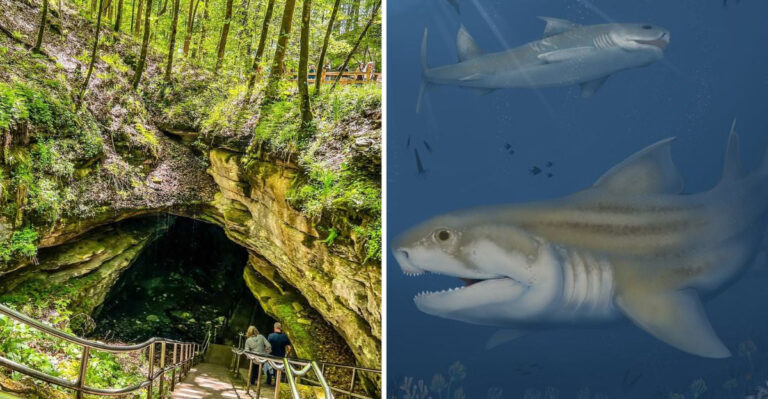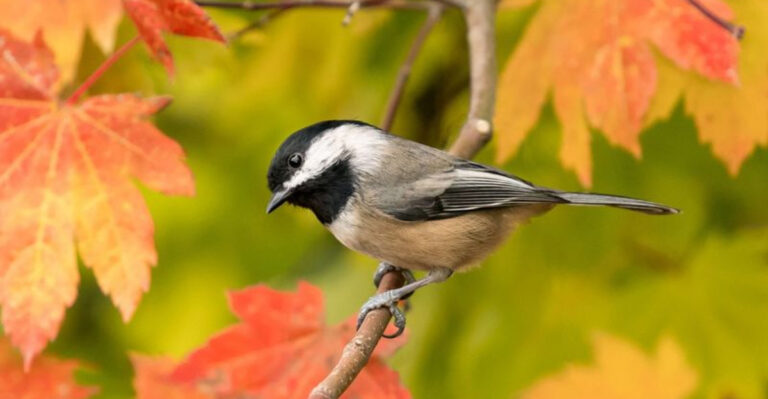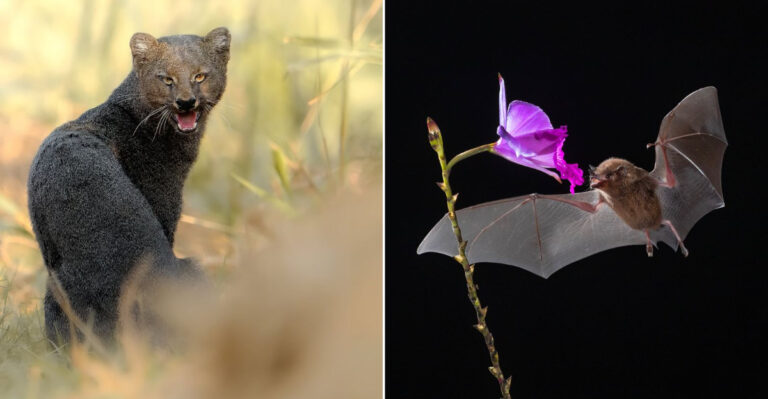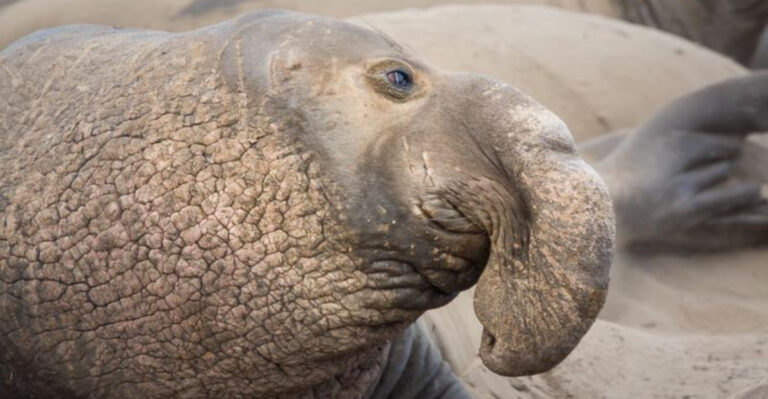17 Fascinating Creatures Names That End With ‘E’
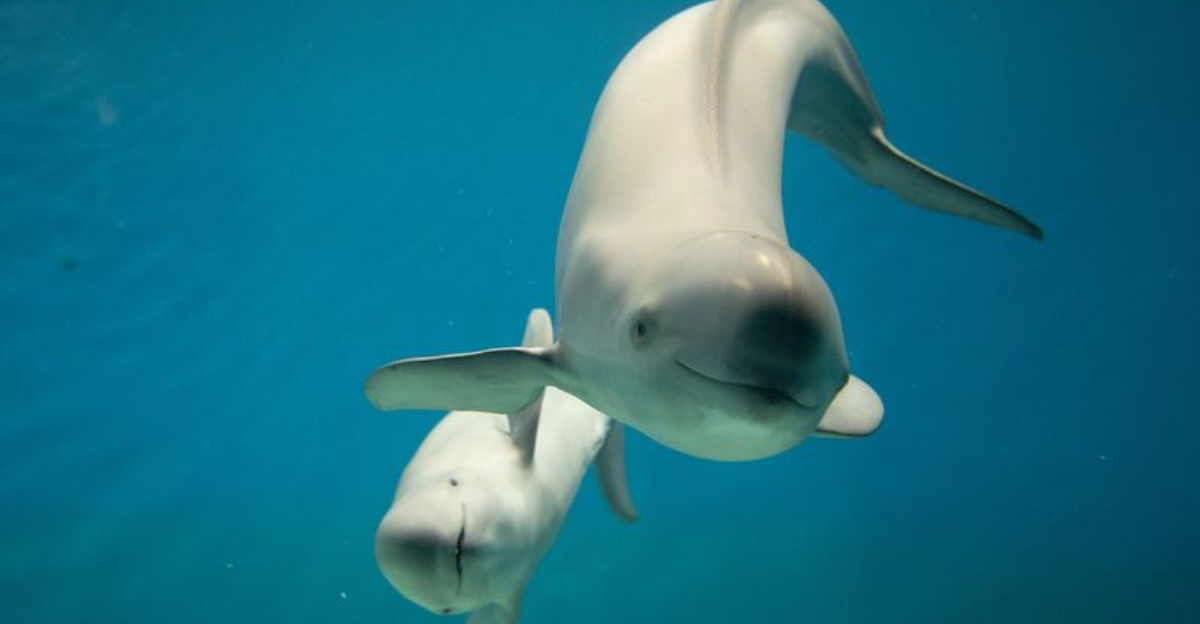
Explore the intriguing world of creatures with names that end in ‘E.’ From the agile mouse to the majestic bald eagle, these animals offer a wealth of diversity and fascination.
Check out these unique creatures, each with its own story, characteristics, and habitats. Discover how these animals thrive in their environments and what makes them remarkable.
1. Snake

Snakes are elongated, legless reptiles found on every continent except Antarctica. Their diversity is staggering, with over 3,000 species. These creatures have adapted to various habitats, from dense forests to arid deserts. Despite common misconceptions, not all snakes are venomous.
In fact, only about 600 species possess venom potent enough to harm humans. Snakes play a crucial role in ecosystems by controlling pest populations. Their diet mainly consists of rodents, insects, and small birds, contributing to ecological balance.
Snakes communicate through body language, vibrations, and pheromones. They have a unique way of sensing their environment using their forked tongue, which collects scent particles and transfers them to the Jacobson’s organ for analysis.
This ability helps them hunt and navigate. Many cultures regard snakes with reverence or fear, symbolizing both danger and healing. Conservation efforts focus on protecting their habitats and educating the public to dispel myths. Whether feared or admired, snakes remain one of the most fascinating creatures on Earth.
2. Turtle
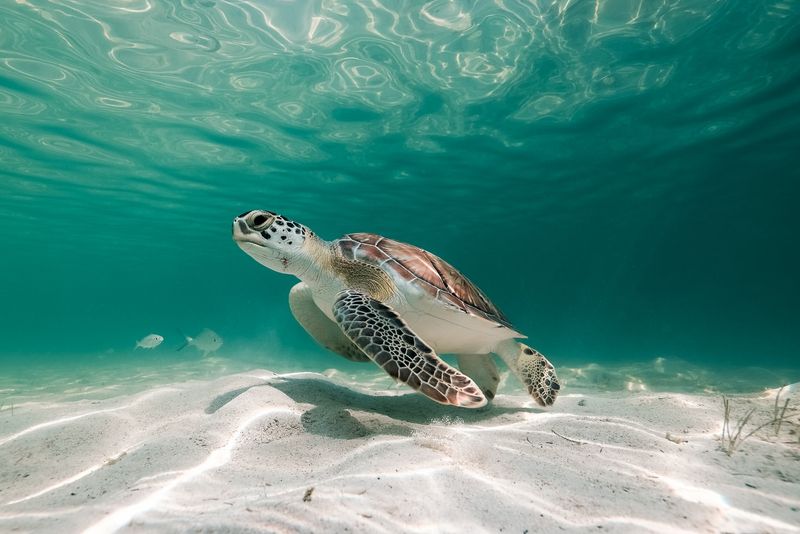
Turtles are ancient reptiles known for their distinctive shells, which provide protection from predators. These creatures can be found in various environments, from oceans to freshwater bodies and even on land. There are two main groups: sea turtles and freshwater turtles, each with unique adaptations.
Sea turtles, like the loggerhead and leatherback, are migratory and travel thousands of miles in their lifetime. Their streamlined shells and flipper-like limbs enable them to navigate the ocean efficiently. Freshwater turtles, such as the painted turtle, inhabit ponds and rivers, using webbed feet for swimming.
Turtles are vital to their ecosystems; for instance, sea turtles help maintain healthy seagrass beds and coral reefs. They face numerous threats, including habitat destruction, pollution, and illegal trade. Conservation efforts aim to protect nesting sites and reduce bycatch in fisheries.
Turtles symbolize longevity and resilience in various cultures, often featured in myths and folklore. Their gentle nature and remarkable adaptations make turtles a subject of fascination and conservation priority.
3. Bald Eagle

The bald eagle, America’s national bird, is a symbol of strength and freedom. This iconic raptor is found across North America, particularly near large bodies of open water. Bald eagles have a striking appearance, with a white head and tail contrasting sharply with their dark brown body and wings.
Their powerful beaks and talons make them formidable hunters. The diet of a bald eagle primarily consists of fish, but they also prey on birds and small mammals. These birds are known for their impressive aerial displays during courtship, which include swooping and spiraling flight patterns.
Bald eagles build enormous nests called aeries, often reused and expanded each breeding season. Conservation efforts in the late 20th century helped recover their populations from the brink of extinction. Their comeback story is a testament to effective wildlife management and environmental protection.
In addition to their ecological role, bald eagles hold cultural significance for many Native American tribes, symbolizing vision and spiritual connection. Their majestic presence continues to inspire awe and admiration worldwide.
4. Masai Giraffe
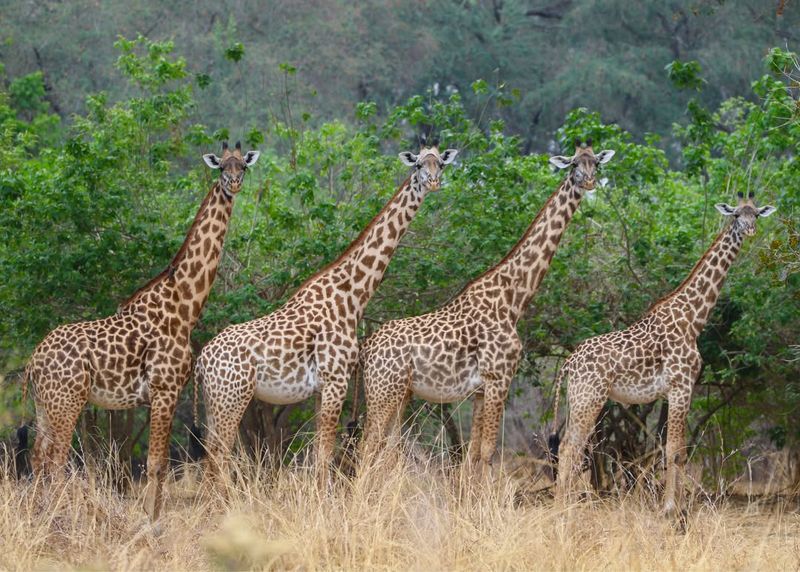
The Masai giraffe is the tallest land animal, gracing the savannahs of East Africa with its iconic, long neck and legs. This subspecies of giraffe is easily recognized by its irregular, jagged spots covering its body. These spots provide excellent camouflage among the trees.
Masai giraffes primarily feed on leaves, flowers, and fruits from acacia trees, using their prehensile tongues to grasp foliage. Their height and specialized diet allow them to access food sources unavailable to other herbivores. Social animals, giraffes form loose herds, often consisting of females and their young.
Males engage in “necking” contests to establish dominance, swinging their necks against each other. The gestation period for a giraffe is about 15 months, resulting in the birth of a single calf. Unfortunately, habitat loss and poaching pose significant threats to giraffe populations.
Conservation initiatives focus on habitat protection and anti-poaching measures. The Masai giraffe’s grace and stature have made it a symbol of African wildlife, inspiring conservation efforts and capturing the imagination of people worldwide.
5. Porpoise
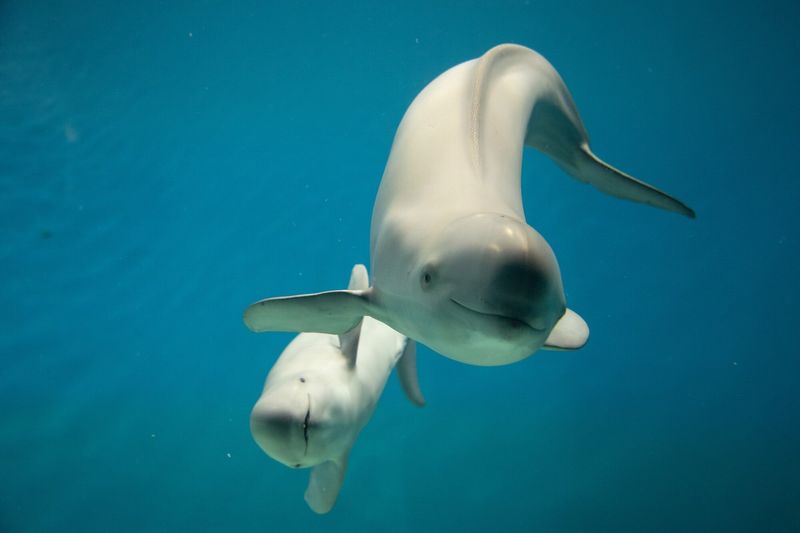
Porpoises are small cetaceans closely related to dolphins, known for their compact and robust bodies. They inhabit coastal and riverine environments in both Northern and Southern hemispheres. Porpoises have a distinctive blunt snout and spade-shaped teeth, differing from their dolphin cousins.
Their social behavior varies, with some species forming small groups while others are more solitary. Porpoises primarily feed on fish and squid, using echolocation to navigate and hunt in murky waters. This ability involves emitting sound waves and interpreting the returning echoes to locate prey and obstacles.
Conservation concerns for porpoises include bycatch in fishing nets and habitat degradation. Efforts are underway to mitigate these threats through protective legislation and awareness programs. In some cultures, porpoises are seen as symbols of good fortune and harmony with the sea.
Their playful nature and intelligence make them beloved inhabitants of the marine world. Observing porpoises in the wild provides a glimpse into the vibrant life of our oceans and underscores the importance of preserving marine ecosystems.
6. American Bumble Bee
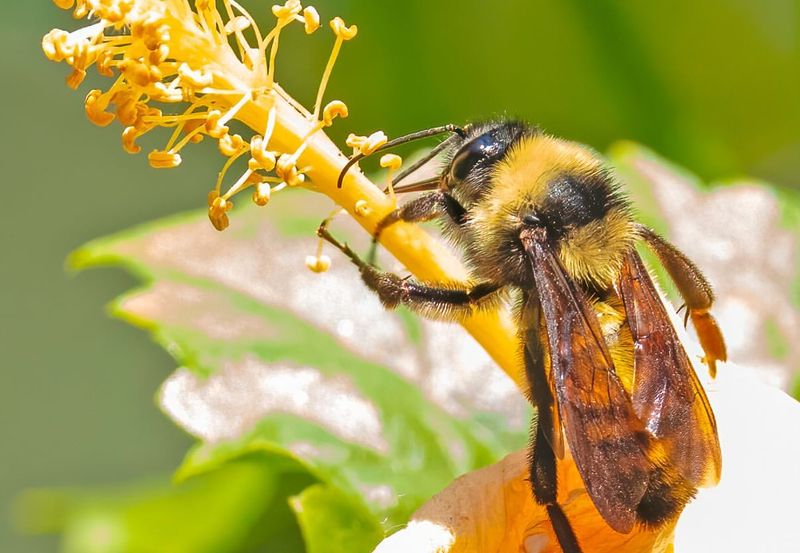
The American bumble bee is a vital pollinator, playing a crucial role in the ecosystem by pollinating plants and crops. These bees are easily recognizable by their large, furry bodies and distinctive black and yellow coloration. They inhabit various environments, including gardens, fields, and woodlands.
Unlike honeybees, bumble bees do not produce large amounts of honey but are essential for pollinating wildflowers and agricultural plants. Their ability to “buzz pollinate” involves vibrating their flight muscles to release pollen from certain flowers, aiding in the reproduction of plants.
The lifecycle of a bumble bee begins with a queen emerging from hibernation in spring to establish a new colony. Workers and drones follow, supporting the colony throughout the summer. Bumble bees face significant threats from habitat loss, pesticide use, and disease. Conservation efforts focus on creating pollinator-friendly habitats and reducing pesticide exposure.
Bumble bees are a testament to the intricate connections within ecosystems and the importance of each species in maintaining ecological health. Their presence in gardens and fields highlights nature’s resilience and interconnectedness.
7. Porcupine
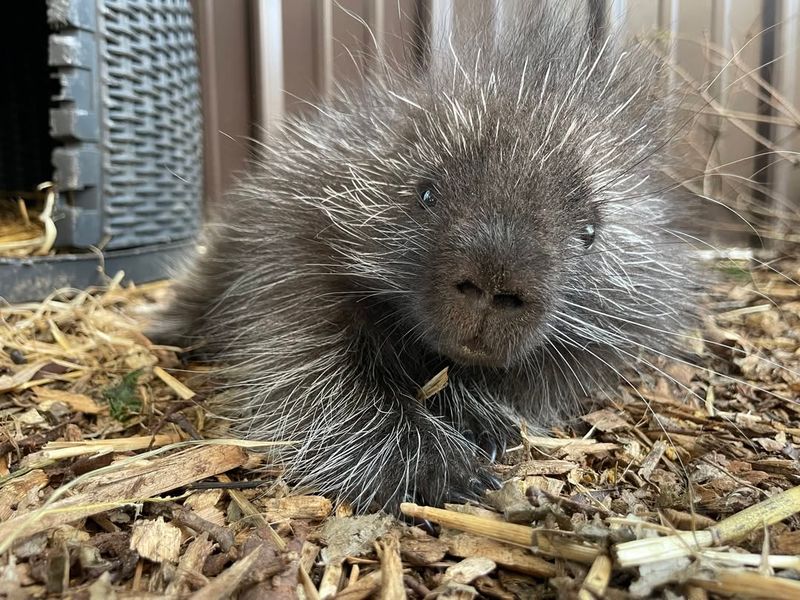
Porcupines are fascinating rodents known for their unique defense mechanism: a coat of sharp quills. These quills are modified hairs coated with keratin and can detach easily upon contact, deterring predators.
Porcupines inhabit forests and grasslands, where they feed on a variety of vegetation, including leaves, twigs, and bark. They are primarily nocturnal, foraging at night and resting during the day. Porcupines are excellent climbers, using their strong claws to navigate trees in search of food.
Despite their intimidating appearance, porcupines are generally peaceful creatures and prefer to avoid confrontation. When threatened, they may rattle their quills as a warning before resorting to physical defense.
Their diet and foraging behavior play a role in shaping vegetation dynamics within their habitats. Conservation concerns for porcupines include habitat destruction and hunting for their quills. Efforts to protect their habitats ensure porcupines continue to fulfill their ecological role.
These remarkable rodents remind us of the diversity and adaptability of life on Earth, showcasing nature’s ingenuity in evolution and survival.
8. Blue Whale
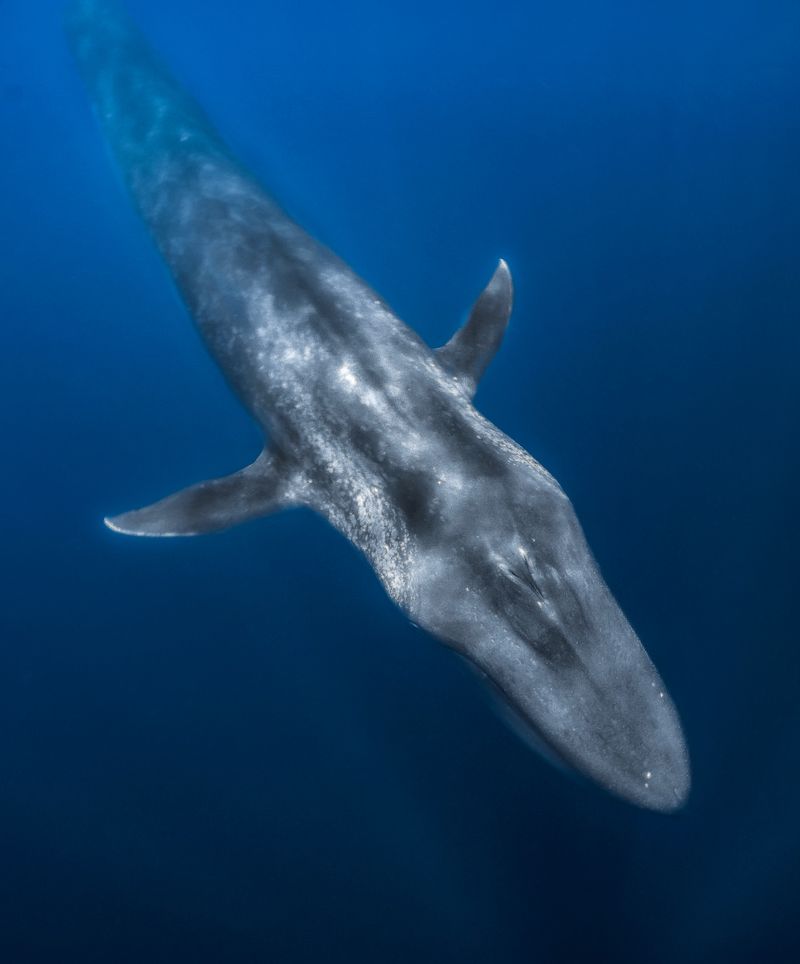
The blue whale is the largest animal to have ever existed, a true giant of the ocean. These magnificent creatures can reach lengths of up to 100 feet and weigh as much as 200 tons. Blue whales are found in oceans worldwide, migrating between feeding and breeding grounds.
Their diet consists almost exclusively of tiny krill, which they consume in vast quantities using baleen plates to filter them from seawater. Despite their size, blue whales are graceful swimmers, capable of moving at speeds up to 20 miles per hour.
Their vocalizations are among the loudest sounds produced by any animal, serving as communication across great distances underwater. Blue whales were once hunted to near extinction but have since become a symbol of marine conservation efforts.
Protecting their habitats and reducing threats from ship strikes and entanglement are crucial for their survival. These gentle giants inspire awe and remind us of the ocean’s wonders and the importance of preserving its inhabitants for future generations.
9. Canada Goose
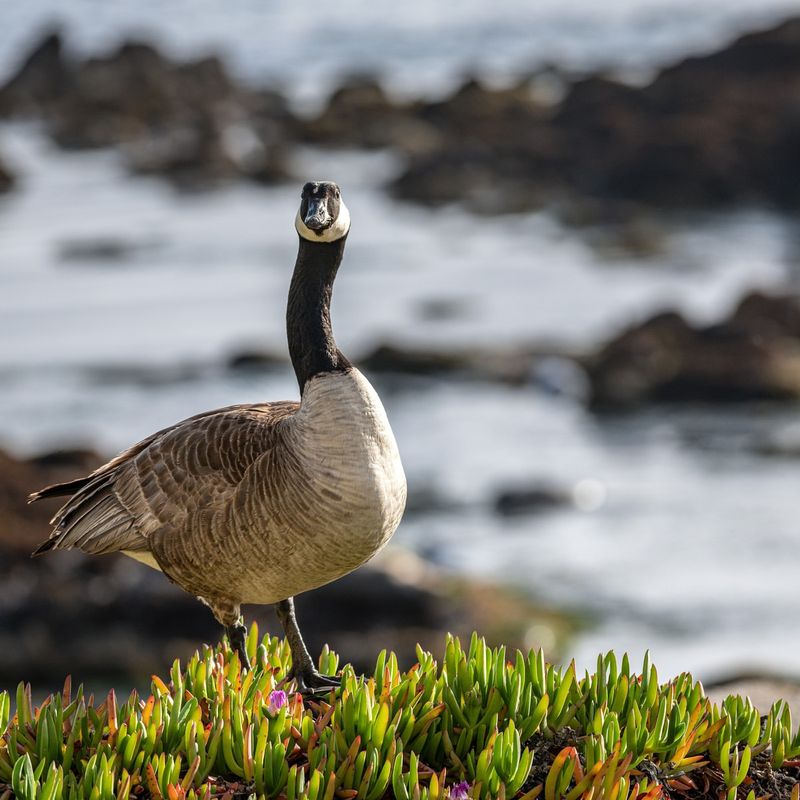
The Canada goose is a familiar sight across North America, known for its distinctive honking calls and migratory behavior. These large birds have a black head and neck with a white “chinstrap” that makes them easily recognizable.
Canada geese inhabit diverse habitats, including lakes, rivers, and urban parks. They are herbivores, feeding on grasses, grains, and aquatic plants. Canada geese are highly adaptable and can thrive in both natural and human-modified environments.
Their migratory patterns are well-studied, with many populations traveling thousands of miles between breeding and wintering grounds. During migration, they fly in a V-formation, which conserves energy and facilitates communication.
Canada geese are known for their strong family bonds, with parents protecting their young during the breeding season. While they are cherished by many, their increasing populations in urban areas can lead to conflicts with human interests.
Management strategies aim to balance conservation with reducing human-goose conflicts. The Canada goose’s resilience and adaptability serve as a testament to the dynamic nature of wildlife and the challenges of coexistence.
10. Mouse
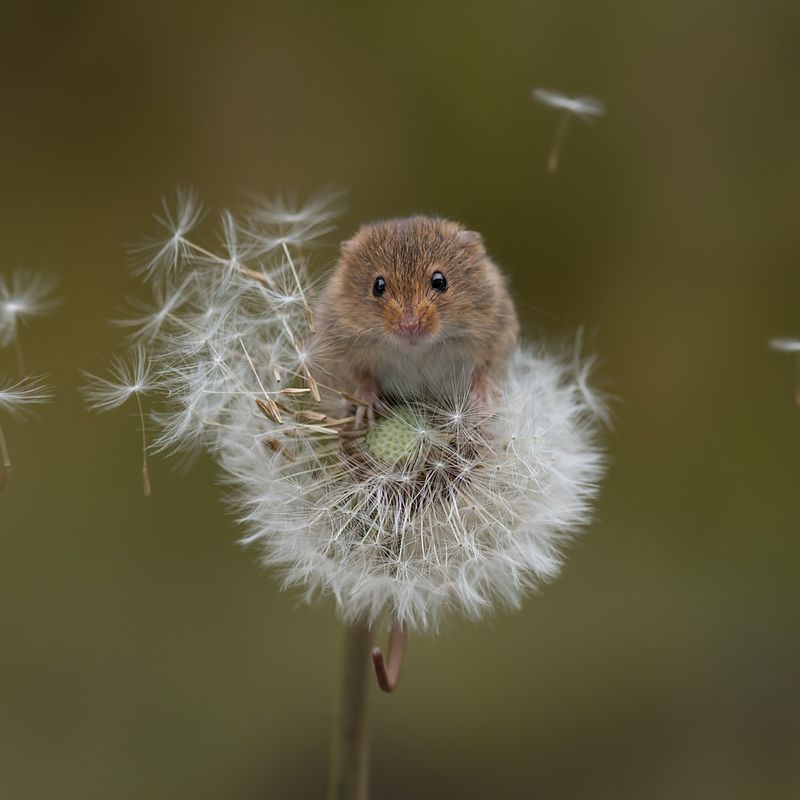
Mice are small rodents that have adapted to nearly every environment on Earth. Their keen senses and agile bodies make them adept at avoiding predators and finding food. Mice are omnivorous, feeding on a wide range of foods, including seeds, fruits, and insects.
They play a vital role in ecosystems as both prey and seed dispersers. Mice are known for their rapid breeding, with females capable of producing multiple litters each year. This reproductive strategy ensures their survival despite high predation rates.
Mice communicate through a combination of vocalizations, pheromones, and body language, allowing them to maintain social structures and navigate their surroundings. In human culture, mice are both admired for their resourcefulness and considered pests due to their tendency to invade homes and agricultural areas.
Efforts to control mouse populations often focus on humane and environmentally friendly methods. Mice are also valuable in scientific research, contributing to medical and genetic studies. Their adaptability and resilience highlight the complexities of nature’s interconnected systems, inspiring both curiosity and respect.
11. Greater Bird Of Paradise
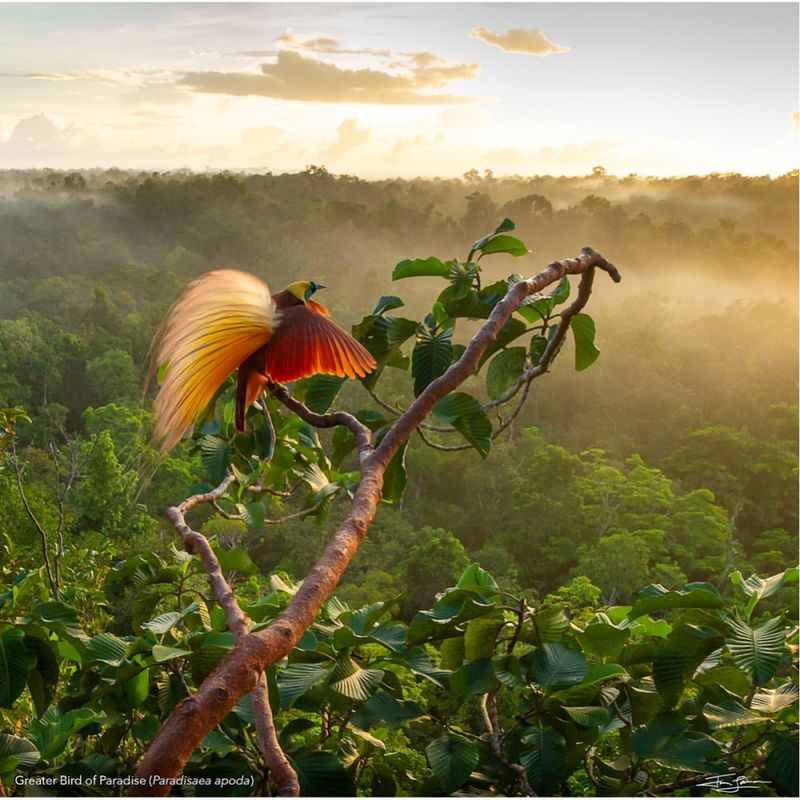
The greater bird of paradise is renowned for its stunning plumage and elaborate courtship displays. Native to the rainforests of New Guinea, these birds are a visual spectacle with their vibrant colors and long, flowing tail feathers.
Males perform intricate dances to attract females, showcasing their feathers in a dazzling display. These performances are not only about visual appeal but also demonstrate the male’s fitness and genetic quality. Greater birds of paradise feed on fruits, insects, and small reptiles, playing a role in seed dispersal within their habitat.
Their calls are a mix of whistles and mechanical sounds, adding to the vibrant soundscape of the rainforest. The beauty and uniqueness of these birds have led to their depiction in art and mythology, symbolizing paradise and ethereal beauty.
However, habitat loss due to deforestation poses a threat to their populations. Conservation efforts focus on preserving their natural habitats and raising awareness about their ecological importance. The greater bird of paradise continues to captivate with its beauty and serves as a reminder of the richness of Earth’s biodiversity.
12. Chimpanzee
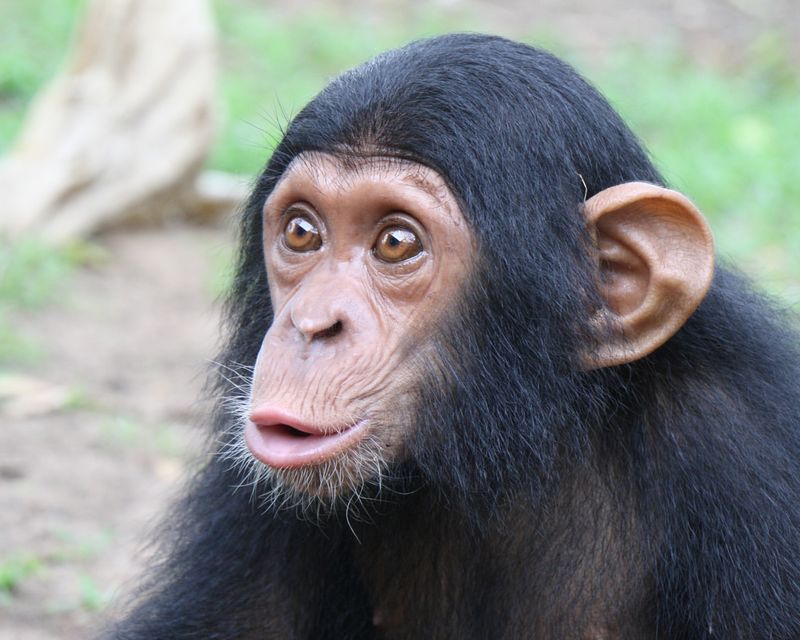
Chimpanzees are highly intelligent primates, sharing about 98% of their DNA with humans. Found in the forests and savannas of Central and West Africa, they are known for their complex social structures and behaviors.
Chimpanzees live in communities led by dominant males, with intricate hierarchies and social bonds. They are adept tool users, utilizing sticks and stones for foraging and problem-solving. Their diet is diverse, consisting of fruits, leaves, insects, and occasionally small mammals.
Chimpanzees communicate through vocalizations, facial expressions, and gestures, showcasing a rich and nuanced form of social interaction. Their ability to learn and adapt has made them a subject of extensive study in understanding human evolution and behavior.
However, they face significant threats from habitat destruction, disease, and illegal wildlife trade. Conservation initiatives aim to protect their habitats and promote coexistence between humans and chimpanzees. These remarkable primates remind us of our shared ancestry and the importance of preserving the natural world for future generations.
13. Coyote
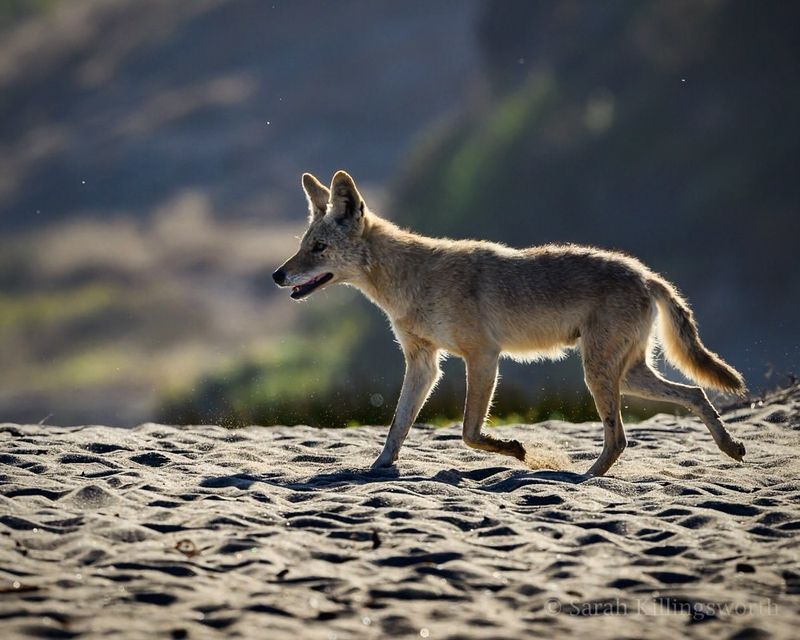
Coyotes are adaptable canids found throughout North America, known for their intelligence and resourcefulness. These medium-sized predators are often spotted in a variety of environments, from deserts and forests to urban areas. Coyotes are omnivorous, with a diet that includes small mammals, birds, fruits, and even carrion.
They are opportunistic feeders, adjusting their diet based on availability and season. Coyotes communicate through a range of vocalizations, including howls, yips, and barks, which serve to establish territory and coordinate social interactions.
Their social structure is typically based on family units, with monogamous pairs raising their young. Coyotes play a crucial role in controlling rodent populations and maintaining ecological balance. Despite their ecological importance, they are often viewed as nuisances due to their tendency to prey on livestock and pets.
Management strategies focus on coexistence and reducing conflicts between coyotes and humans. Coyotes symbolize adaptability and survival, thriving in diverse landscapes and overcoming challenges. They inspire a deeper appreciation for nature’s resilience and the dynamic interplay of ecosystems.
14. American Quarter Horse

The American Quarter Horse is celebrated for its strength, speed, and versatility, excelling in various equestrian disciplines. This breed is named for its ability to sprint a quarter mile faster than any other horse. Known for their muscular build and calm temperament, Quarter Horses are popular in rodeos, racing, and ranch work.
They have a strong presence in Western riding, particularly in events like cutting, reining, and barrel racing. The breed’s origins trace back to the early American colonies, where they were developed from a mix of Spanish and English horses.
Quarter Horses are renowned for their agility and quick reflexes, making them ideal for working with cattle. Their intelligence and willingness to please also make them excellent companions and leisure horses.
While they primarily serve practical purposes, Quarter Horses have cultural significance, representing the spirit of the American West. The breed’s continued popularity reflects its adaptability and enduring appeal. Quarter Horses embody the harmonious relationship between humans and animals, highlighting the shared history and mutual benefits of domestication.
15. Manatee
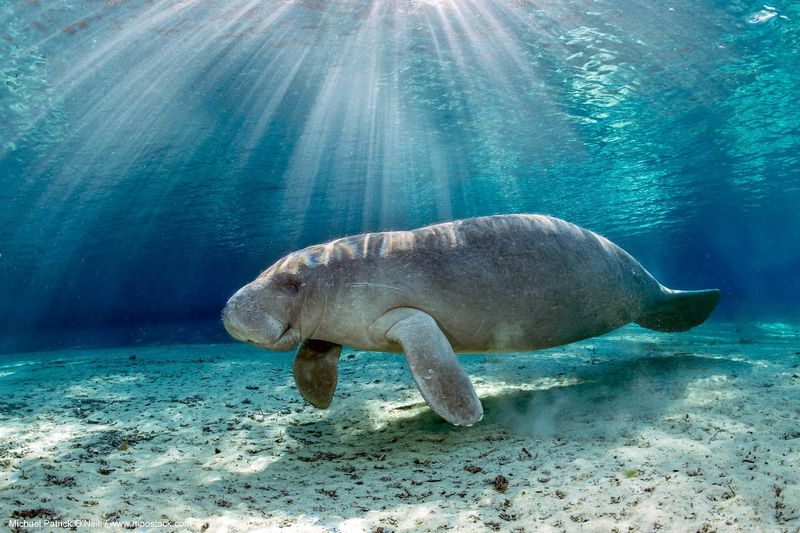
Manatees, often called “sea cows,” are large, gentle marine mammals found in warm coastal waters and rivers. These herbivores feed on a variety of aquatic plants, playing a crucial role in maintaining healthy seagrass beds and ecosystems.
Manatees are known for their slow, graceful movements and friendly disposition, often approaching humans in the water. They communicate through a range of vocalizations, including chirps, whistles, and squeaks.
Manatees face numerous threats, including habitat loss, boat collisions, and entanglement in fishing gear. Conservation efforts focus on protecting their habitats and reducing human-related dangers. Manatees have a low reproductive rate, with females giving birth to a single calf every two to five years.
This makes population recovery efforts even more critical. These gentle giants are beloved for their peaceful nature and serve as ambassadors for marine conservation. Their presence in ecosystems highlights the delicate balance of marine environments and the importance of preserving them for future generations.
16. Sea Turtle
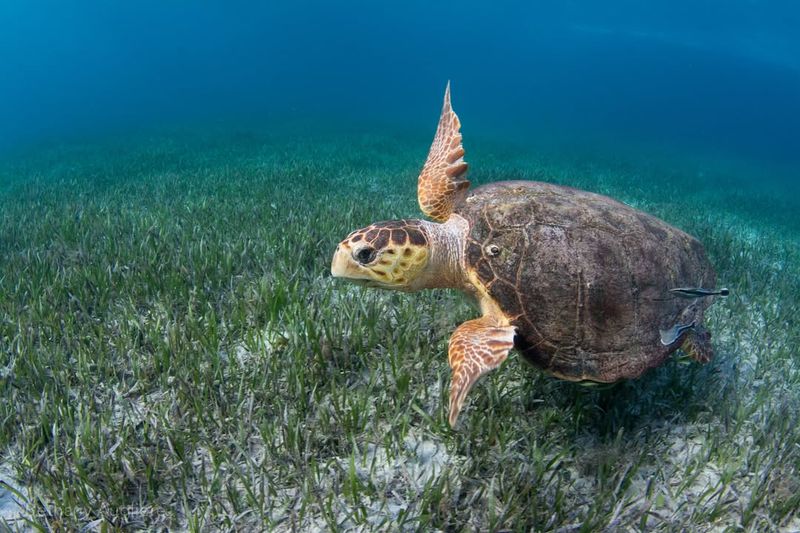
Sea turtles are ancient mariners, having roamed the oceans for over 100 million years. These reptiles are well-adapted to marine life, with streamlined shells and flipper-like limbs for efficient swimming. There are seven species of sea turtles, including the loggerhead, green, and hawksbill, each with unique characteristics and habitats.
Sea turtles are known for their long migrations, with some species traveling thousands of miles between nesting and feeding grounds. They play essential roles in marine ecosystems, such as maintaining healthy seagrass beds and coral reefs.
Despite their resilience, sea turtles face numerous threats, including habitat destruction, pollution, and illegal trade. Conservation efforts focus on protecting nesting sites, reducing bycatch in fisheries, and raising public awareness.
Sea turtles hold cultural significance in many coastal communities, symbolizing longevity and wisdom. Their continued survival depends on global efforts to protect marine habitats and reduce human impact. Sea turtles inspire awe and respect, serving as a reminder of the ancient and enduring life of the oceans.
17. Hare

Hares are swift and agile mammals known for their long ears and powerful hind legs. These adaptations make them excellent runners, capable of reaching speeds up to 45 miles per hour to evade predators. Hares are found in diverse habitats, including meadows, grasslands, and forests.
They are herbivorous, feeding on a variety of plant materials such as grasses, herbs, and bark. Hares are primarily solitary animals, coming together only during the breeding season. Their breeding strategy involves producing multiple litters per year, with leverets born fully furred and open-eyed, ready to fend for themselves.
Hares play a role in their ecosystems as prey for a variety of predators, contributing to ecological balance. Conservation concerns for hares include habitat loss and hunting pressure. Efforts to protect their habitats ensure hares continue to thrive in their natural environments.
Hares symbolize speed and agility, often featured in folklore and mythology as clever and cunning creatures. Their presence in the wild offers a glimpse into the dynamic interplay of predator and prey relationships in nature.

